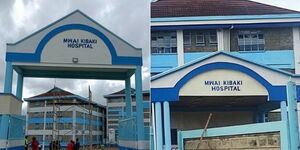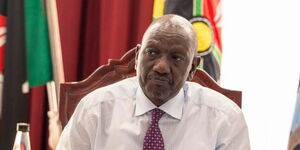The new-look Mombasa Port, which is Eastern and Central Africa’s regional hub, has registered significant progress in modernisation and competitiveness.
An ongoing Ksh334 billion Kenya Ports Authority investment program envisages that Mombasa Port will have an annual capacity to handle 110 million tonnes of cargo by 2040.
The port is now one of the best equipped in the continent, boasting of 13 ships to Shore Gantry Cranes (SGC), 50 rubber Tyred Gantry Cranes (TGC) and 78 terminal tractors.
It remains the most well-connected port in the entire region with 33 shipping lines calling and providing direct connectivity to over 80 ports.
The mass expansion project and modernisation of the port has enhanced regional trade between Kenya and its neighbors.
It currently ranked 5th in Africa in terms of cargo volume. The five African ports currently ranked higher are: Tanger Med port in Tangier, Morrocco, Port Said in Egypt, Port of Durban in South Africa and Lagos Port Complex in Nigeria.
Transshipment container traffic at the port of Mombasa jumped 74% in 2019, buoyed by a strong performance in the second-half of the year, raising Kenya’s hope of consolidating its grip as the preferred gateway to the region.
Data by the KPA shows that the Mombasa Port handled a transshipment (goods destined for other ports) traffic of 211,204 twenty-foot equivalent units (TEU) in 2019, compared to 121,577 the previous year.
The port has since embarked on the construction of a second container terminal with a capacity of 550,000 TEU as well as the construction of a new oil terminal with expected completion in August 2021.
Currently, there are only two oil terminals that can only hold one tanker at a time. The new terminal will be in a position to handle four tankers of up to 100,000 tonnes.
In May, Maersk and Cosco (China Ocean Shipping Company) signed a new joint service deal dubbed “Mashariki” with an aim to introduce direct trips between Eastern Africa and Asia.
The container ship Cosco Yinkou made the first voyage of this service to Mombasa in early June 2020.
The Port of Mombasa is crucial to serving landlocked countries including Uganda, Rwanda and the Democratic Republic of Congo, especially to handle increased importation of heavy commodities like steel.
Congestion at the port had seen Kenya lose some of its business to Tanzania, but the completion of the Standard Gauge Railway(SGR) greatly helped improve efficiency and speedy evacuation of cargo at the port.
Latest data by the Kenya National Bureau of Statistics (KNBS) shows that the volume of goods hauled by trains on the SGR remained stable in the first half of the year, boosting earnings despite economic disruption due to the Covid-19 pandemic.
About 1.98 million tonnes of cargo was carried on the SGR between January and June, a slight decline from the 2.20 million tonnes moved in a similar period of 2019.
Kenya has also registered remarkable progress in the construction of Lamu Port, located 200 miles north of Mombasa. The 32-berth Lamu Port is a greenfield port, part of the Lamu Port - South Sudan - Ethiopia Transport (LAPSSET) corridor.
The mega-project launched during President Mwai Kibaki tenure is aimed at enhancing Kenya’s position as a gateway and transport hub in the East African region.












